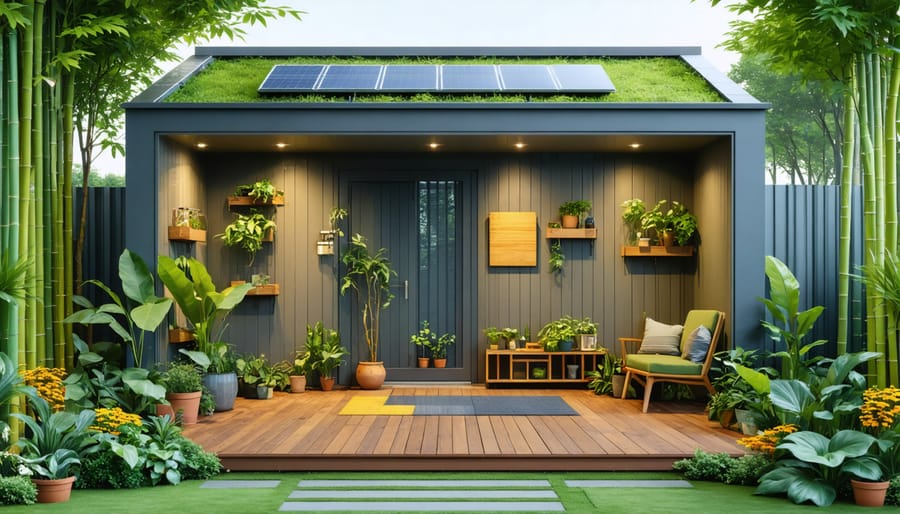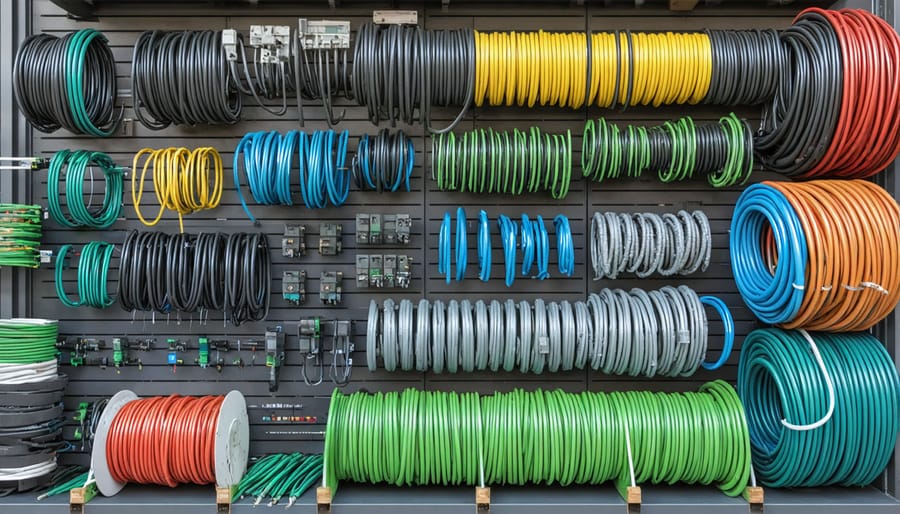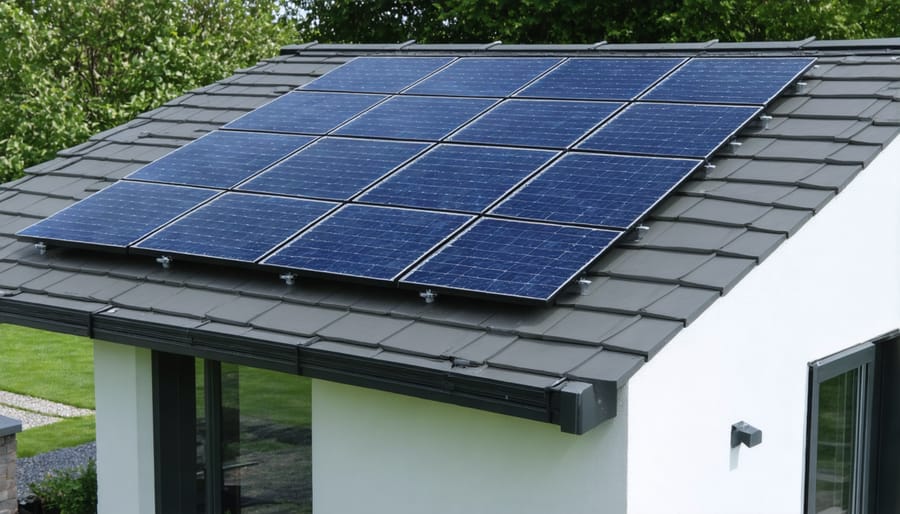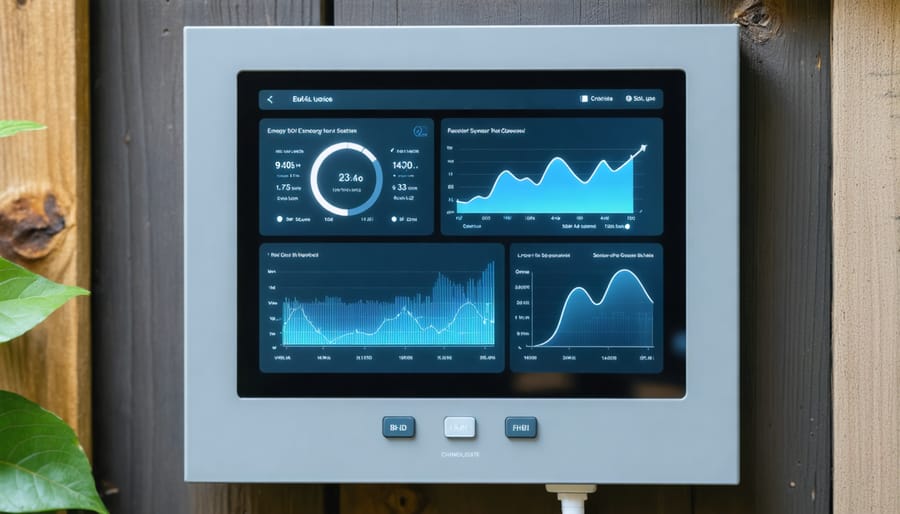Transform Your Shed Into an Eco-Haven With These Earth-Friendly Electrical Materials

Transform your home into an eco-conscious sanctuary by choosing sustainable building materials that reduce environmental impact while enhancing your living space. Modern eco-friendly materials have evolved far beyond recycled basics, now offering premium alternatives that rival traditional options in both durability and aesthetic appeal. From bamboo flooring that regenerates in just five years to recycled steel beams that slash carbon emissions by 75%, today’s green building materials deliver remarkable performance while preserving our planet’s resources. Innovative solutions like low-VOC paints, reclaimed wood, and locally-sourced stone not only minimize your home’s carbon footprint but also create healthier indoor air quality and unique architectural character. Whether you’re planning a complete renovation or simply updating a single room, selecting eco-friendly materials represents a powerful investment in both your home’s value and our environmental future.
Sustainable Wiring Solutions for Your Shed
Lead-Free and Low-Toxicity Cables
Modern homeowners are increasingly choosing lead-free and low-toxicity cables for their electrical wiring installation, and for good reason. These eco-friendly alternatives not only protect the environment but also create a healthier living space for you and your family.
Traditional PVC-coated cables often contain harmful chemicals that can leach into the environment over time. In contrast, low-toxicity cables use safer materials like LSZH (Low Smoke Zero Halogen) compounds, which produce minimal toxic fumes in case of fire. These cables are typically made with recyclable materials and don’t release harmful substances during their lifetime.
Look for cables labeled with certifications like RoHS (Restriction of Hazardous Substances) or REACH compliance. These standards ensure the wiring materials are free from dangerous substances like lead, mercury, and certain flame retardants. Many manufacturers now offer halogen-free options that maintain excellent electrical performance while being gentler on the environment.
The initial cost might be slightly higher, but the long-term benefits to both environmental and human health make these cables a worthwhile investment for any eco-conscious homeowner.

Recycled Metal Conduits
Recycled metal conduits represent a sustainable alternative to traditional electrical housing solutions, offering both environmental benefits and long-lasting durability. These conduits are typically manufactured from repurposed aluminum, steel, and copper, reducing the demand for newly mined materials while maintaining high performance standards.
Many homeowners appreciate that recycled conduits perform identically to their conventional counterparts, meeting all necessary electrical codes and safety requirements. The manufacturing process uses up to 95% less energy compared to creating new metal conduits, resulting in a significantly lower carbon footprint.
Installation is straightforward and follows the same principles as standard conduits. They’re compatible with existing electrical systems and can be bent, cut, and threaded using regular tools. For optimal results, ensure proper grounding and use appropriate connectors designed for recycled materials.
When selecting recycled conduits, look for certification labels that verify the recycled content percentage. Many manufacturers now offer options with 70-100% recycled material, making it easier to make environmentally conscious choices without compromising on quality or safety.
Energy-Efficient Lighting Options

Solar-Powered Lighting Systems
Solar-powered lighting systems offer an eco-friendly and cost-effective solution for illuminating your home while reducing your carbon footprint. These systems harness the sun’s energy through photovoltaic panels, storing it in batteries for use during nighttime or cloudy days. For a seamless integration, check out our detailed solar lighting installation guide before getting started.
Modern solar lights come in various styles, from pathway markers to motion-activated security fixtures. Popular options include solar-powered pendant lights for porches, wall-mounted sconces for entryways, and string lights for garden ambiance. Many homeowners particularly love solar skylights, which provide natural daylight without any electrical consumption.
When selecting solar lighting, consider your local climate and sun exposure. South-facing installations typically receive optimal sunlight in the Northern Hemisphere. Look for fixtures with high-quality LED bulbs and efficient batteries that can provide reliable illumination throughout the night. Many systems now include smart features like automatic dim settings and remote control capabilities.
Installation is generally straightforward, requiring minimal tools and no electrical expertise. Most systems are wireless, eliminating the need for complex wiring or professional installation. Regular maintenance simply involves keeping the solar panels clean and replacing batteries every few years.
LED Fixtures and Controls
LED lighting has revolutionized home illumination, offering an eco-friendly solution that dramatically reduces energy consumption while providing superior lighting quality. Modern LED fixtures use up to 75% less energy than traditional bulbs and can last up to 25 times longer, making them an excellent investment for environmentally conscious homeowners.
Smart LED fixtures take energy efficiency even further by incorporating motion sensors, dimming capabilities, and programmable schedules. These features ensure lights are only on when needed and at optimal brightness levels. Many systems can be controlled through smartphone apps, allowing you to monitor and adjust your lighting from anywhere.
When selecting LED fixtures, look for Energy Star certified options, which meet strict efficiency guidelines. Consider color temperature too – warm white (2700-3000K) creates a cozy atmosphere, while cool white (4000-5000K) works well in task-oriented spaces.
For maximum efficiency, pair your LED fixtures with smart controls like occupancy sensors or daylight harvesting systems. These automatically adjust lighting based on natural light levels and room occupancy. Some popular options include wireless switches, scene controllers, and whole-home automation systems that integrate with other smart devices.
Remember to properly dispose of old fixtures through local recycling programs to minimize environmental impact.
Sustainable Power Distribution
Renewable Energy-Ready Panels
Modern renewable energy-ready panels are game-changers for homeowners looking to embrace sustainable power solutions. These specialized electrical panels are designed to seamlessly integrate with solar panels, wind turbines, and battery storage systems, making your transition to clean energy smoother and more cost-effective.
These panels come with dedicated renewable energy circuits and smart monitoring capabilities that help you track power generation and consumption in real-time. Many models feature dual functionality, allowing you to switch between grid power and renewable sources automatically, ensuring continuous power supply while maximizing your green energy usage.
One of the standout features is their expandability. You can start small with just a few solar panels and gradually expand your renewable energy system without replacing the entire electrical panel. This flexibility makes them an excellent investment for homeowners planning a phased approach to sustainability.
Look for panels with weather-resistant housing and UL certification for safety. Most modern units also include surge protection and smart home compatibility, letting you monitor and control your energy usage through your smartphone.
Energy Monitoring Systems
Modern energy monitoring systems are revolutionizing how we manage power consumption in eco-friendly homes. Smart meters and energy monitors display real-time usage data through user-friendly apps, helping homeowners identify energy-hungry appliances and adjust their habits accordingly. These systems typically include wireless sensors that track individual circuit usage, providing detailed insights into where power is being consumed most.
Many homeowners report saving 15-30% on their energy bills after installing monitoring systems, simply by becoming more aware of their usage patterns. Features like automated alerts for unusual consumption spikes and monthly usage reports make it easier to maintain efficient energy practices. Some advanced systems even integrate with smart home devices, automatically adjusting thermostats and lighting based on your habits.
Popular options include whole-house monitors that connect to your main electrical panel and plug-in devices for individual appliances. When choosing a system, look for ones with clear display interfaces, mobile app compatibility, and the ability to set custom energy-saving goals. This technology is particularly valuable for homes with solar panels, as it helps track both energy production and consumption for optimal efficiency.

Installation and Maintenance Tips
Installing eco-friendly electrical systems requires careful planning and attention to detail. Start by mapping out your electrical needs and consulting with a certified electrician who specializes in sustainable installations. When working with weather-resistant electrical materials, ensure all components are properly rated for your climate zone.
For solar panel installations, position them at the optimal angle (typically 30-45 degrees) facing south in the Northern Hemisphere. Clean panels quarterly with biodegradable soap and water to maintain peak efficiency. Check connection points annually for any signs of wear or corrosion.
LED lighting systems should be installed with proper heat dissipation in mind. Consider using motion sensors or smart switches to maximize energy efficiency. Replace LED bulbs before they completely fail to prevent potential circuit stress.
For natural ventilation systems, regularly inspect vents and fans for debris accumulation. Clean or replace air filters every three months, using eco-friendly alternatives when available. Check seals around ventilation openings annually to prevent energy loss.
When maintaining eco-friendly insulation, conduct yearly inspections for moisture damage or settling. Address any gaps promptly to maintain thermal efficiency. For recycled or natural insulation materials, ensure proper vapor barriers are in place to prevent moisture buildup.
Remember to keep detailed maintenance records and schedule regular professional inspections of your electrical system. This proactive approach helps identify potential issues before they become major problems and ensures your eco-friendly systems operate at peak efficiency for years to come.
Making the switch to eco-friendly electrical materials in your home is more than just a trend – it’s a meaningful step toward a more sustainable future. These environmentally conscious choices not only reduce your carbon footprint but also offer significant long-term cost savings through improved energy efficiency. By selecting materials like LED lighting, recycled wiring components, and sustainable insulation, you’re contributing to reduced waste and lower energy consumption while creating a healthier living environment for your family.
Remember that every sustainable choice, no matter how small, makes a difference. Whether you’re planning a complete home renovation or simply replacing a few electrical components, prioritizing eco-friendly materials helps protect our planet’s resources for future generations. The initial investment in sustainable electrical materials often pays for itself through reduced energy bills and longer product lifespans.
We encourage you to work with certified electricians who specialize in green solutions and to always verify the environmental certifications of your chosen materials. By making informed decisions about electrical components today, you’re helping build a more sustainable tomorrow while enjoying the benefits of a more efficient, environmentally conscious home.

